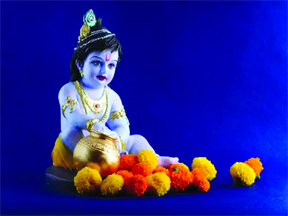
The Akshaya Tritiya festival is also known as Akti or Akha Teej. This festival is an auspicious festival of Hindus and Jains. This festival falls on the third day of the Shukla Paksha of the Vaishakh month. This festival is celebrated as an auspicious time by Hindus and Jains in India and Nepal. According to the mythological texts, whatever works are done on this day, they get a auspicious result. Hence this day is called Akshaya Tritiya.
In Sanskrit, ‘Akshaya’ means hope, prosperity, joy and success and ‘Tritiya’ means third. Every month the tritiya comes on the Shukla Paksha, but during the Shukla Paksha in Vaishakh, the tritiya is considered auspicious. This day holds special significance as the most celebrated muhurat. On this day, any auspicious work can be done – such as a wedding, home entrance, buying clothing, jewelery, houses, land and vehicles etc.
It is believed that on this day, pind daan or any kind of donation made for the Pitros results in renewable. Taking a bath in the Ganges on this day can get rid of all sins. The war of Mahabharata had ended on this day and the Dwapar Yuga had also ended on this day.
Ganga bathing has a special importance in Hinduism and after taking Ganga bath in Brahma Muhurta on the day of Akshay Tritiya, one should worship Lord Vishnu and Lakshmi and offer barley or wheat sattu, cucumber and gram dal. Brahmanas should eat food and donate to them.
The Meaning Behind the Name
The word “Akshaya” in Sanskrit means “that which never diminishes,” and “Tritiya” refers to the third lunar day. Hence, Akshaya Tritiya is a day when actions and intentions are magnified, bringing long-lasting results. It’s not merely about rituals-it’s about what we choose to begin, give, and grow.
Legends That Light the Way
Every celebration in India is steeped in story, and Akshaya Tritiya is no exception. The day gains its sacred status through various divine episodes that continue to inspire generations:
Parashurama Jayanti
Born on this day was Lord Parashurama, the sixth incarnation of Lord Vishnu. A warrior sage and upholder of dharma, his life represents the balance between strength and righteousness.
Sudama and Krishna – The Tale of Humble Devotion
Who could forget the touching tale of Sudama, who approached Lord Krishna with nothing more than parched rice? On Akshaya Tritiya, Krishna’s joyful acceptance of the humble gift led to Sudama’s transformation from poverty to prosperity. The message is clear: devotion and love outweigh material offerings.
The Akshaya Patra – Eternal Provision
In the Mahabharata, during the Pandavas’ exile, Draupadi received the Akshaya Patra, a vessel of endless food, from Krishna. This miraculous gift ensured the family was never hungry-a symbol of divine sustenance and grace.
The Descent of Ganga
Another legend says that Mother Ganga descended from the heavens on Akshaya Tritiya. Bathing in holy rivers on this day is believed to purify the soul and wash away sins.
Jain Perspective: The First Act of Alms
For Jains, the day holds spiritual resonance as the moment when Rishabhanatha, the first Tirthankara, ended his fast by accepting sugarcane juice. This act marks the origin of almsgiving (daan) and the principle of compassion toward all beings.
Rituals and Reverence
While customs vary across regions, some practices are universally followed on Akshaya Tritiya:
– Pujas and Homams: Devotees offer prayers to Lord Vishnu, Lakshmi, and Kubera, invoking blessings for material and spiritual well-being.
– Charity (Daan): A core value of the day is giving-be it food, clothes, books, or financial aid. The belief is that charity on this day returns a hundredfold.
– Buying Gold and Property: One of the most visible customs is the purchase of gold, silver, or land, as these are believed to remain “akshaya”-ever-increasing.
– New Beginnings: Be it a wedding, a business venture, or the start of education, Akshaya Tritiya is considered the most auspicious day to start afresh.
Regional Flavors and Festivities
Odisha: The Farmer’s Blessing
In Odisha, the day marks the beginning of the farming season with the ceremony known as Akhi Muthi Anukula, where seeds are sown with prayers for a bountiful harvest.
Maharashtra and Gujarat: Gold,
Grace, and Generosity
In these western states, the day is observed with great pomp-homes are decorated, families donate food and clothes, and gold purchases soar.
Tamil Nadu and Karnataka: Lakshmi’s Light
Devotees perform Lakshmi Pooja, prepare sweets like payasam, and pray for both material and moral wealth.
Beyond Ritual: The Essence of Akshaya
What makes Akshaya Tritiya truly powerful is not the gold bought or the rituals followed-it is the intent behind every act. The festival teaches us:
– To begin with courage
– To give without expecting
– To live with awareness
– To build what endures
It is a day that reminds us to invest in things that don’t fade-kindness, honesty, devotion, and generosity.
Akshaya Tritiya in the Modern World
In a fast-changing digital age, the essence of Akshaya Tritiya remains untouched. While gold is now bought through mobile apps and prayers are livestreamed, the spirit of the festival persists:
– Online charity drives gain traction
– Eco-conscious acts like tree planting grow in popularity
– Financial wisdom is encouraged-investing in mutual funds, education, and sustainable goods
The modern expression of Akshaya Tritiya is as much about wise living as it is about traditional observance.
Akshaya Tritiya is not just a ritual-it is a reflection of what we hold eternal. In a world that changes every moment, it urges us to root ourselves in values that outlast time. As we offer prayers, buy gold, or give to those in need, let us also sow the seeds of peace, truth, and compassion.
Because the true meaning of Akshaya is not what we gain, but what we give-freely, sincerely, and without end.





Be the first to comment